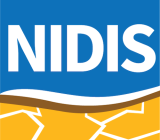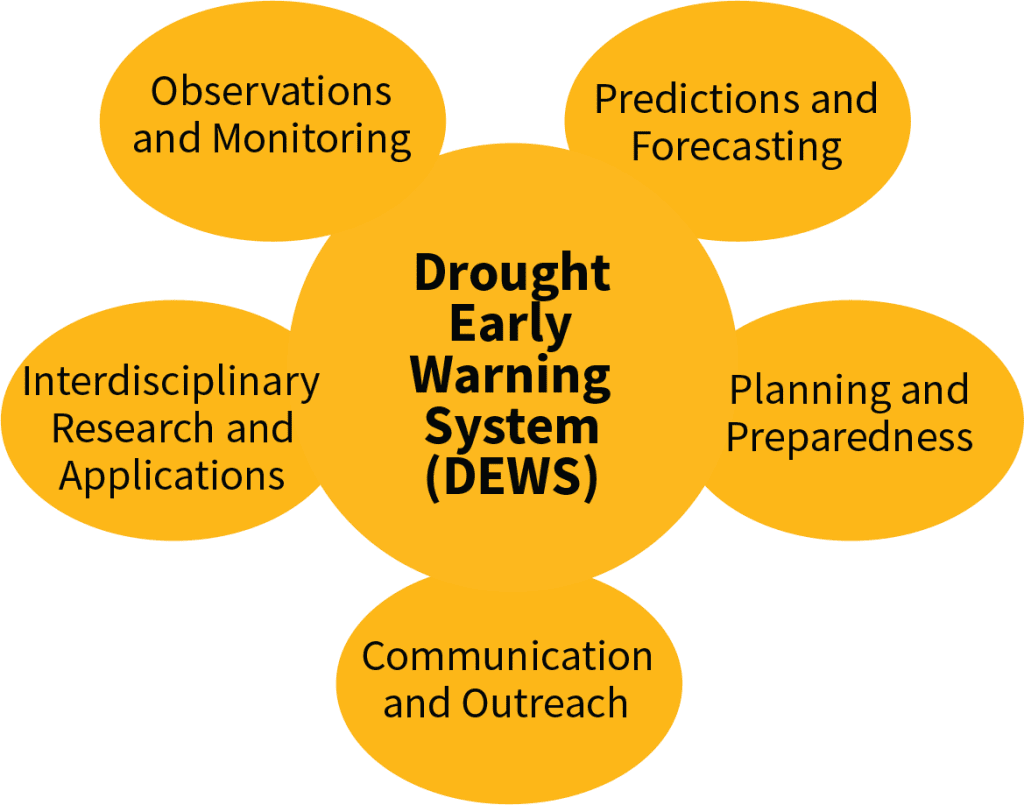

National Integrated Drought Information System (NIDIS)
Drought affects every sector of the national economy, costing U.S. tax-payers billions of dollars in damages. It impacts urban and rural communities, the agriculture industry, water and electric utilities, public health, transportation, jobs and more.
In 2006, Congress passed the National Integrated Drought Information System (NIDIS) Act of 2006, which directs NIDIS to develop and “provide a national drought early warning information system.” NIDIS was reauthorized in 2014 and 2019. Its mission is to help the nation proactively manage drought risks and impacts and improve long-term drought resilience. To fulfill this mission, NIDIS studies and addresses the impacts of drought by collecting reliable data, communicating relevant information, and developing innovative tools and resources for public and management use.
For more information about NIDIS, visit the U.S. Drought Portal.
Notice of Funding Opportunities
Partners
Federal collaborators:
- Department of Commerce
- Department of Agriculture
- Department of Defense
- Department of Energy
- Department of Health and Human Services
- Department of Homeland Security
- Department of Interior
- Department of Transportation
- FEMA
- EPA
- NASA
- CDC
- Army Corps of Engineers
Other partners:
- Tribes
- governors
- associations
- water councils
- river basin commissions
- departments of natural resources
- academic institutions
- citizen science
- and the corporate and private sector
NIDIS is a multi-agency partnership that coordinates drought monitoring, forecasting, planning, and information at national, state, and local levels across the country.
NIDIS advances these goals by:Supporting analysis and assessment of past drought events to inform planning for and response to developing droughts.
NIDIS is focused on improving the characterization of the onset, duration, and severity of drought.
Developing and maintaining the newly redesigned U.S. Drought Portal
NIDIS partners with NOAA’s National Centers for Environmental Information to manage the U.S. Drought Portal (Drought.gov), a one-stop shop for easily accessible data, decision-support products, resources, and information on drought.
Supporting Scientific Research That Reinforces Accuracy In Drought Monitoring And Forecasting.
NIDIS engages researchers and practitioners from the National Oceanic and Atmospheric Administration, and other agencies and organizations to assess current operational and near real-time prediction systems, on sub-seasonal to seasonal timescales.
Co-Producing And Delivering Resources That Strengthen Drought Preparedness And Resilience Through Engagement, Networking, And Collaboration With Communities And Stakeholders.
NIDIS’ regional Drought Early Warning Systems (DEWS) and their networks build on existing partnerships to improve dissemination of drought research, tools, and planning information in easy-to-understand formats such as timely, accessible, and useful drought outlook webinars and workshops.
Drought Early Warning Systems (DEWS)


At the state and local level, NIDIS has developed regional DEWS, where local networks of researchers, resource managers, policymakers, the private sector, academics, and other stakeholders share information and actions to help their communities cope with drought. A DEWS coordinates this network of key regional partners so that decision makers and citizens can systematically approach drought monitoring and forecasting integration when planning and preparing for drought. These regional DEWS respond to particular geographic and hydrologic circumstances, as well as specific stakeholder needs in their respective region.
A regional DEWS is not simply the dissemination of a forecast. It is an integrated information system that is comprised of multiple information sets, such as forecasting, monitoring, research, capacity-building, and public outreach. A DEWS encourages innovation by integrating new, locally relevant drought information, and supports the introduction of new technologiesthat detect and communicate drought risks and warnings.


